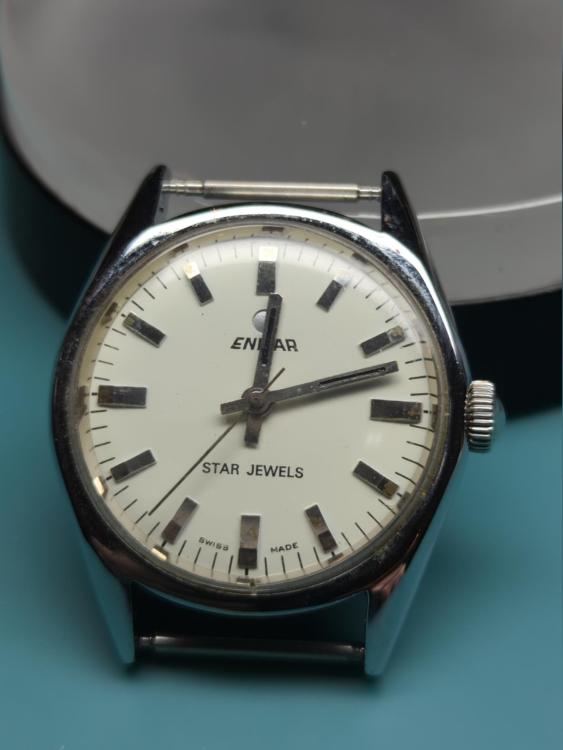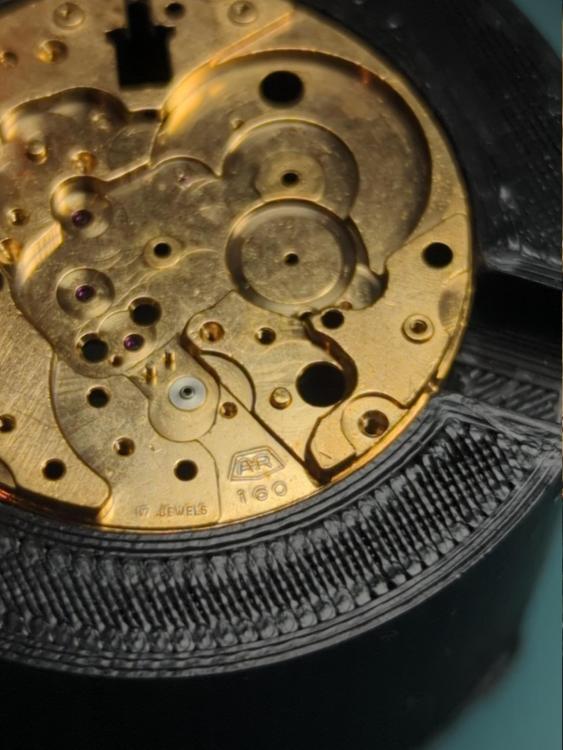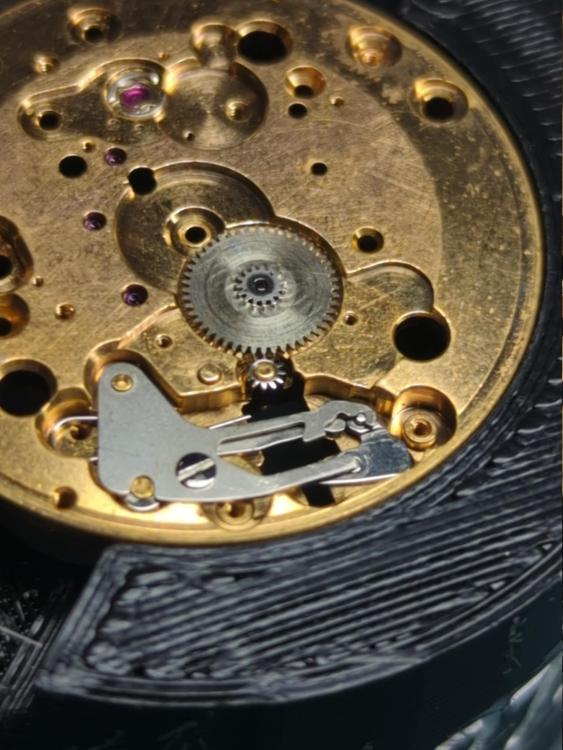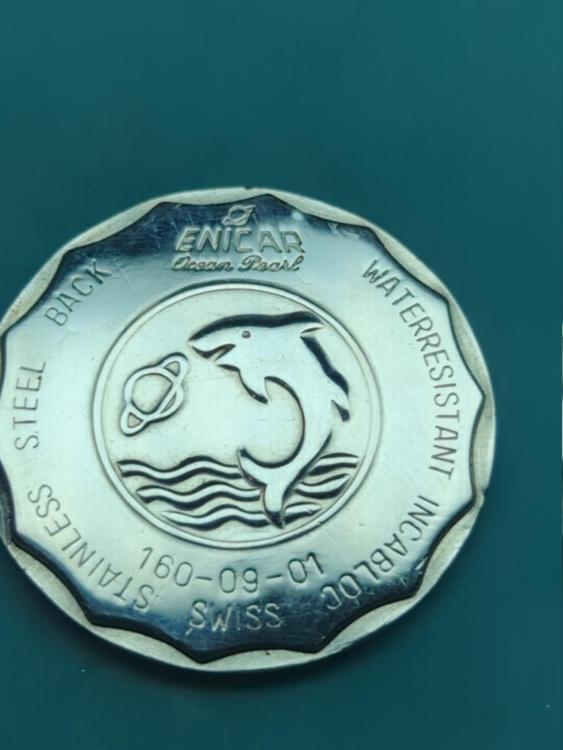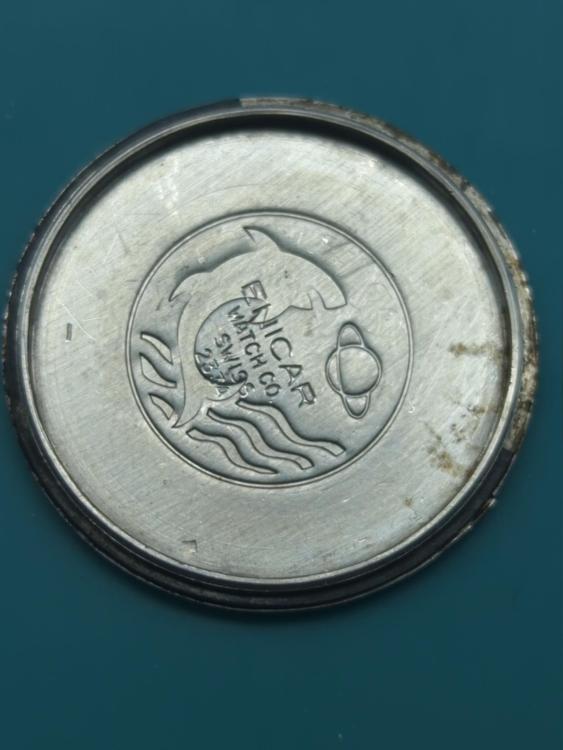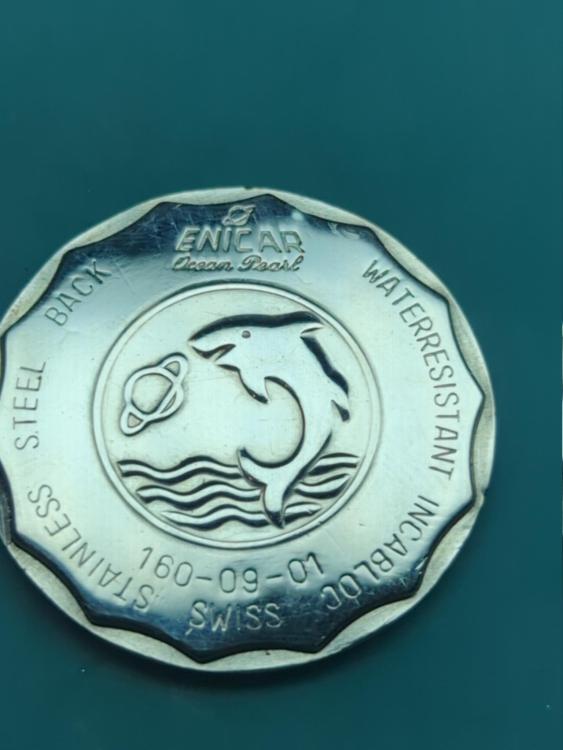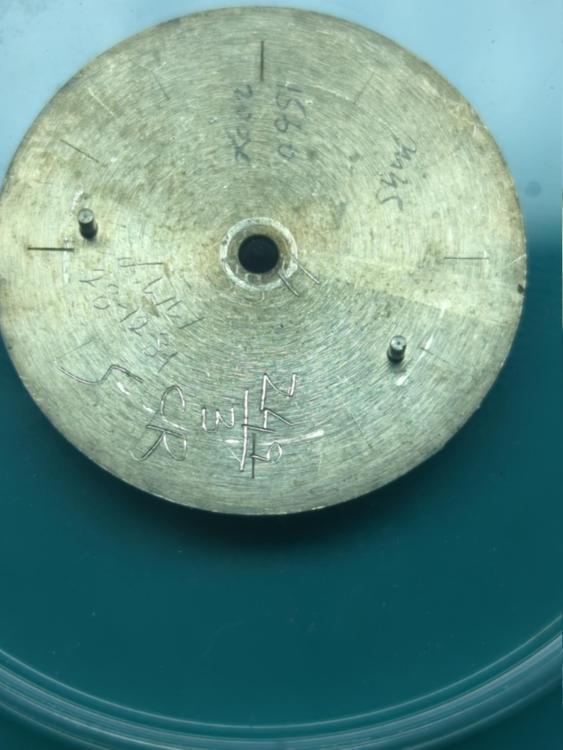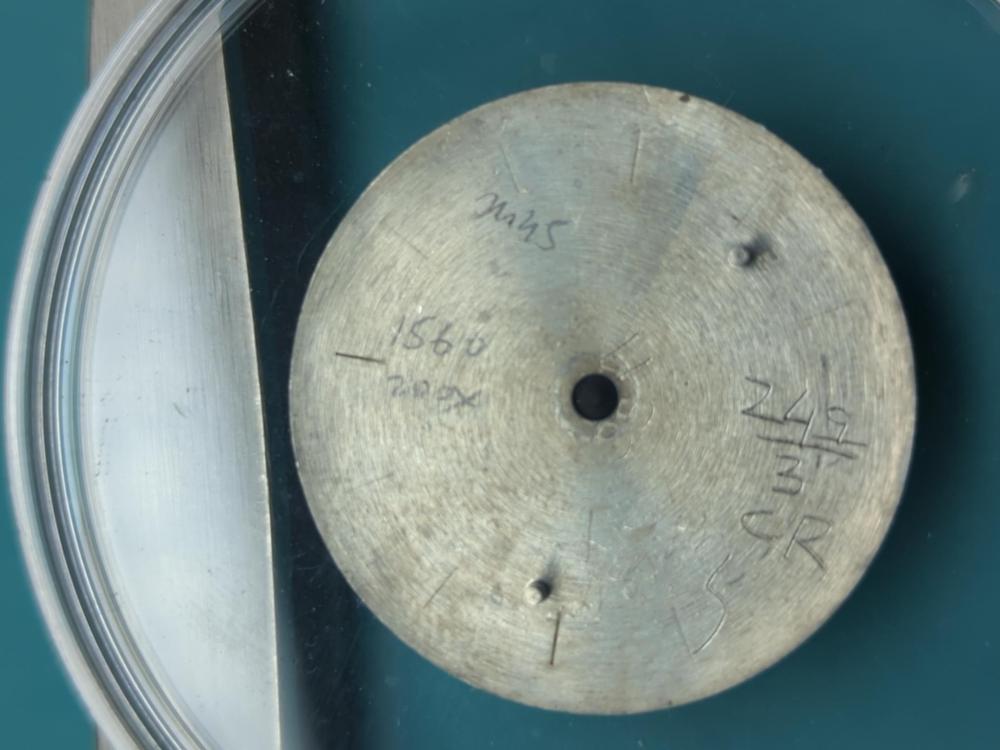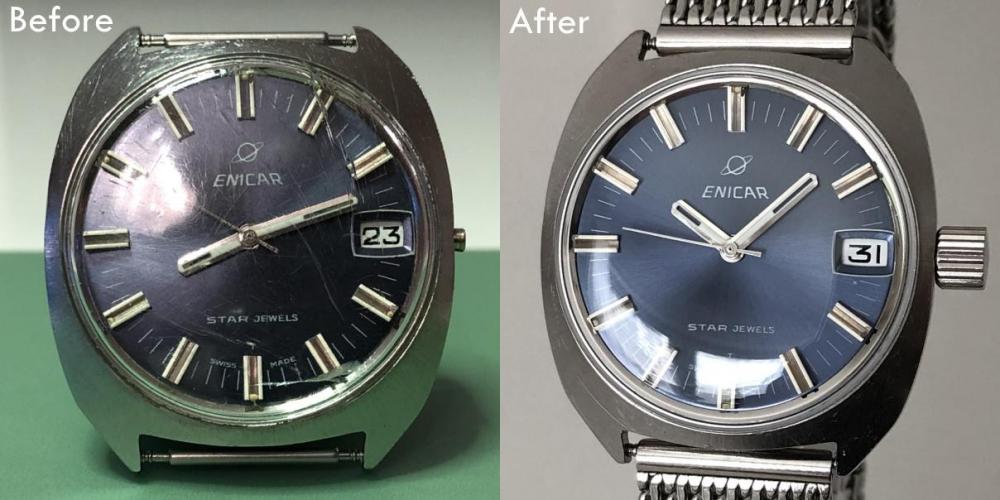Search the Community
Showing results for tags 'enicar'.
-
I just stripped an Enicar AR 160 ready to clean and put back together, when taking it apart I noticed that the intermediate wheel was installed with the chamfer facing up (see pictures) and the straight edge facing down. I have always seen this the other way around ie chamfer facing down, but there are always exceptions to every rule, so is this one of them? I am wondering if I should reinstall it as I found it, or place it with the chanfer down as I have seen in most other watches where there is a chamfer present on the wheel... any advice from the forum? I'm not sure if I am the first in the watch as the screw heads looked pristine, but a few were loose, and there were no markings on the back of the case (see pictures below) however, it would be quite difficult to do it on this kind of pressed case back, but there were a lot of strange scratchings on the back of the dial (see pictures), so just wondering if this is how some other watch maker marked their work for this kind of case back?? If I am the first in the watch then the intermediate wheel was installed chamfer up in the factory, so I should reinstall it this way, if I am not the first in there, then maybe the person before me installed it incorrectly? My fear is that if I try it the wrong way I start chipping off teeth from the sliding pinion! What would you advise? Watch: Inside showing movement information: Case back (outside) showing more movement information: The intermediate wheel as I found it showing the chamfer facing up: Clean case back (no markings) Back of dial scratchings #1: Back of dial scratchings #2:
-
Disassembly sequence here (Please sort by name in ascending order) Assembly sequence here (Please sort by name in ascending order) The watch is an Enicar Star Jewels Ocean Pearl from the 1970s A bit of background I bought this watch on tradera.com (Swedish eBay) listed in the category "Klockor/Renoveringsobjekt" ("Watches / Renovation items"). It was listed as "working" despite lacking the winding stem. I bought it for three reasons. I wanted to try my hands on an inexpensive watch in visual need of renovation. I was curious of the Enicar brand and their in-house movements, and I thought the blue dial with its applied indices had potential. It was clear that the watch needed a new winding stem, crown, and armoured crystal. I found an original stem on eBay from Spain for less than €10 including shipping (a bit of a bargain I think). I bought a bunch of inexpensive waterproof crowns from CousinsUK.com so that I could select the most comfortable and at least somewhat nice looking. I also bought a couple of inexpensive Sternkreutz armoured glasses from CousinsUK.com Overall the movement looked pretty OK except for a third wheel pivot that was rusty. Removing the rust (using vinegar essence) the pivot became Coca Cola bottle shaped so I burnished it and in the process had to remove approx. 2 to 3/100 mm. This in turn created too much side-shake so I replaced the jewel as well. The mainspring looked pretty OK too so I kept it. The cannon pinion also needed a bit of tightening. I guess the friction between the centre wheel arbor and the cannon pinion really can't last forever when a watch is being used for many, many years, perhaps even for decades (looking at the case back of this watch it has seen massive use). Anyway, to tighten the cannon pinion I first tried with my Seitz jewelling pusher and stake for lanterning cannon pinions, but it feels like the edges of the pusher and stake are somehow too blunt or perhaps not designed for wrist watch movements?! So, I resorted to my cannon pinion tightening tool (Bergeon 4733) which is really a bit scary to use but works very well once you've destroyed your first two or three cannon pinions learning how to use it. The trick is not to alter the position of the screw (unscrew it) once it reaches the inside of the handle. As soon as the screw touches the inside of the handle it's time to press. That will usually tighten the cannon pinion the required 1-3/100 mm (I would guess). To give back some of the luster to the dial and hands I simply used a Dial & Hand Cleaning Pen from CousinsUK.com. It worked better than I had expected. The old lume was partly missing and what was left was completely crusty so I simply scratched the remains off and didn't bother to replace it (the blue colour shining through the hands looked pretty great and I don't care much for lume anyway) Despite throwing everything in my arsenal of collected knowledge and experience on the this watch I couldn't get it to run perfectly. The amplitude (as well as the rate) in the horizontal positions fluctuates between 260 and 280 degrees but mostly stays around 260 degrees. I did adjust the curb pin as the hairspring was pinched between the boot and the curb pin and made sure it bounced evenly between the two, but the effect was only marginal. I suspect that the hairspring touches the lower part of the boot. Anyway, I decided to wait with further investigations, put it together, wear it and enjoy it. Despite this shortcoming it performs very well as a daily wearer, only varying in rate between about +1 and -1 seconds per day.
- 13 replies
-
- 9
-

-
- star jewels
- ocean pearl
-
(and 4 more)
Tagged with:


